When planning a trip to Japan, you may not know about Tottori on the Western Side on Honshu in the Chugoku region. The least populated prefecture, Tottori is located along the Sea of Japan and further designated a part of the San-in Region. It’s famous for its かに, crabs, and sand dunes, there is a lot to see in the capital city of Tottori Prefecture, Japan. Welcome to Tottori!
- 1. Tottori Sand Dunes (鳥取砂丘, Tottori sakyu)
- 2. Tottori Sand Museum (鳥取砂の美術館, Tottori suna no bijutsukan)
- 3. Tottori Castle Ruins (鳥取城跡, Tottorijōato)
- 4. Colonial House, Jinpukaku, 仁風閣
- 5. Karoichi Fish Market
- 6. 鳥取賀露かにっこ館 (Tottori Karo Kanikkokan, Tottori Karo Crab Aquarium
- 7. Have some of the 地元の味 (jigenoaji, local taste)
- 8. Getting around town: Kirin Jishi Loop Bus
- How to Get to Tottori By Train
- How to get to Tottori from Tokyo by Plane
- Like this post? Pin it for later!
[Editor’s Note: This post was originally published in December of 2018 and has been updated for freshness, accuracy and comprehensiveness.]
1. Tottori Sand Dunes (鳥取砂丘, Tottori sakyu)
Tottori Sand Dunes may be the main reason for a visit. These geological wonders were created thousands of years ago between a combination of soil from the rivers and wind blow sand from the sea. Easily 100 ft in height, they make an interesting contrast to Japan’s usually green landscape.
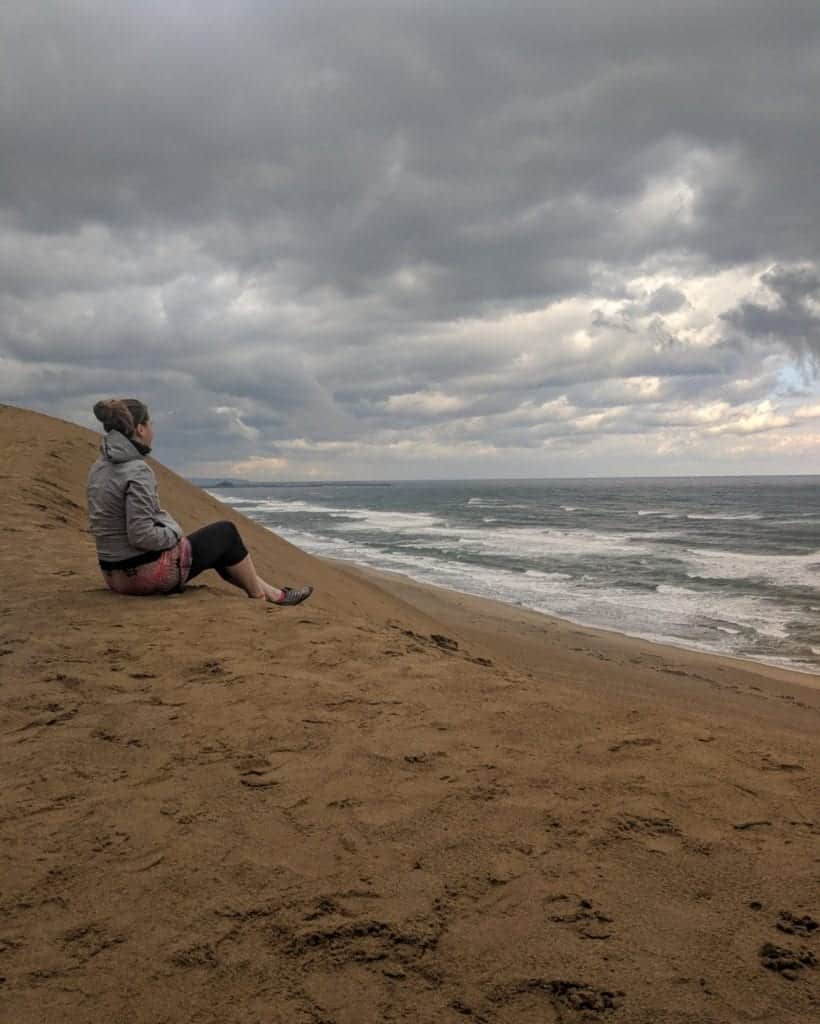
The visitor center gives you a quick overview of the history as well as the plants and animals that are indigenous to the dunes. There’s some interesting pictures from the 20th century to how they have changed over time as well.
If adventure travel is your thing, there is a myriad of activities for you here. Ride on canal back, go sandboarding, or catch a hang glider. There’s even a ski lift to give you more of a birds-eye view.
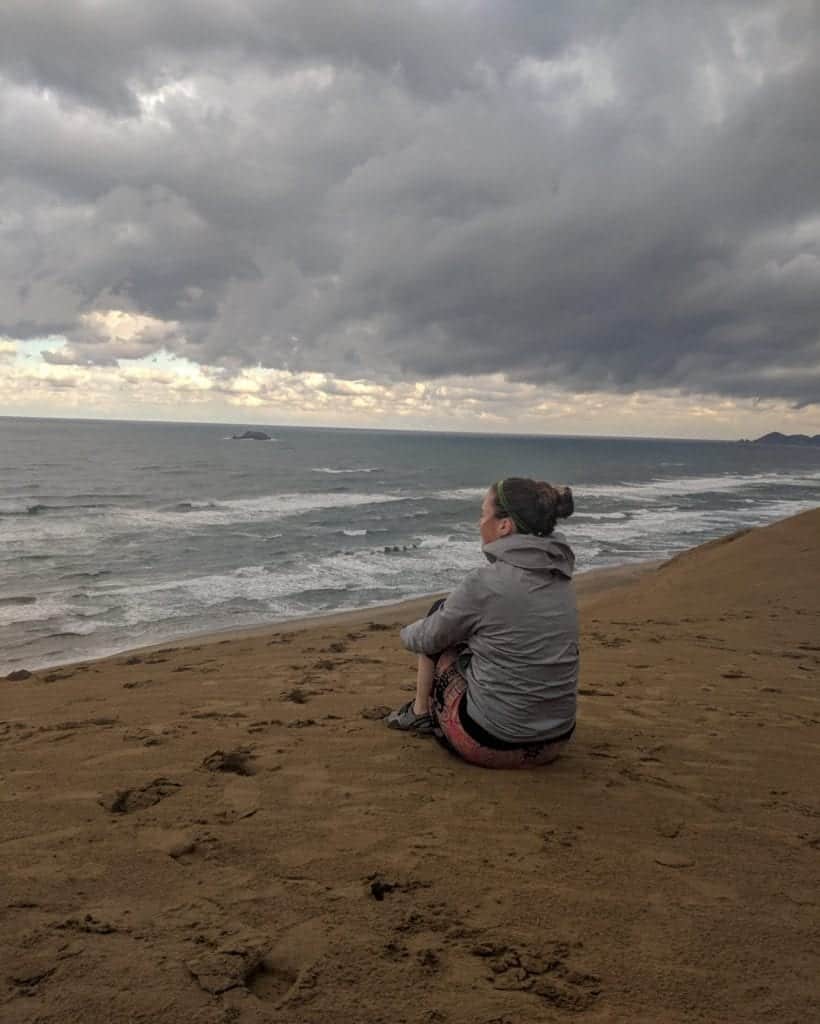
If you happen to be visiting in Winter, you might want to fight the cold winds coming off the sea for the Sakyu winter illuminations! If you miss them there, depending on where you are illuminations run near half the year so plenty of opportunities around Japan!
The Tottori Sand Dunes are part of the larger San’in Kaigan UNESCO Global Geopark. Unlike UNESCO World Heritage sites (which Japan has many of), the purpose of the geoparks is not just to conserve the natural heritage but to use it for education and revitalization as well. As such, they are required to have tours so that’s another thing to take advantage of!
2. Tottori Sand Museum (鳥取砂の美術館, Tottori suna no bijutsukan)
When you hear “sand museum” you may think of it as a geological exhibit. This is not. Since 2006 the Tottori Sand Museum has been “Japan’s only open-air museum with statues of created from sand”. Japan like’s their originality!
The museum invites some of the highest level of sand sculptors from around the world to put their work on display here.
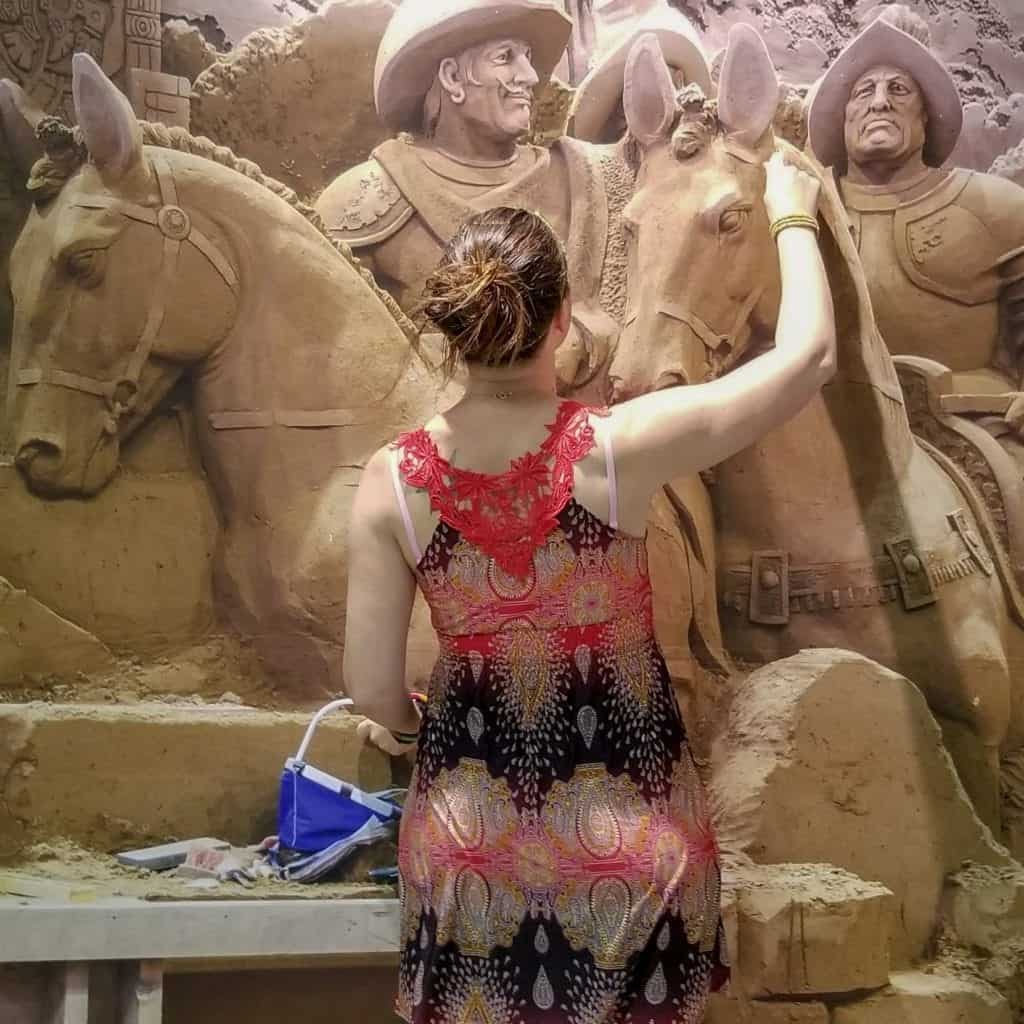
The 11th exhibition at the Tottori Sand Museum was all Nordic related. From castles to Edvard Munch’s The Scream, to Nordic folklore such as The Little Mermaid and Odin.
Every year the exhibition changes themes and in the past it has been UK, Germany, America, and Asia wonders.
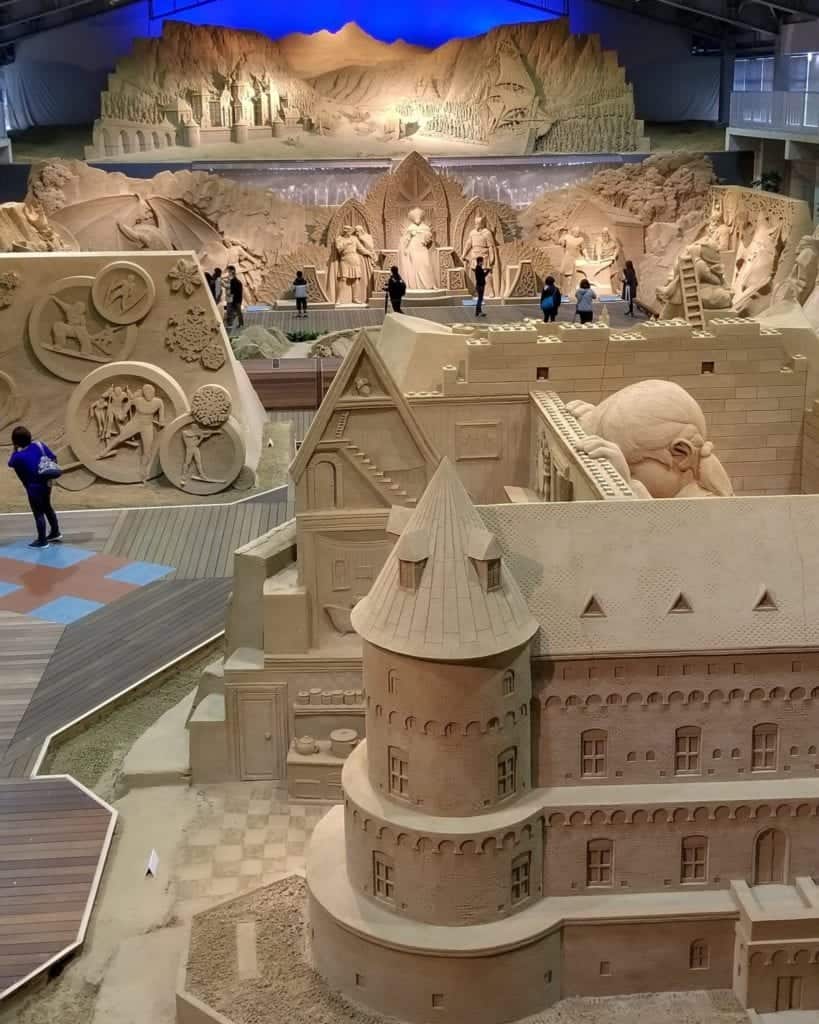
3. Tottori Castle Ruins (鳥取城跡, Tottorijōato)
Sometimes ruins are literally just mounds of dirt and a few rocks where one once stood (looking at you, Takaoka Castle). Of which, it’s hard to imagine what happened to all the construction material. Others, like with Tottori Castle Ruins, the walls for the baileys still remain and it is almost like it was some feat of magic, and not because they are missing, that you can’t see the buildings. There is also one of the gates.
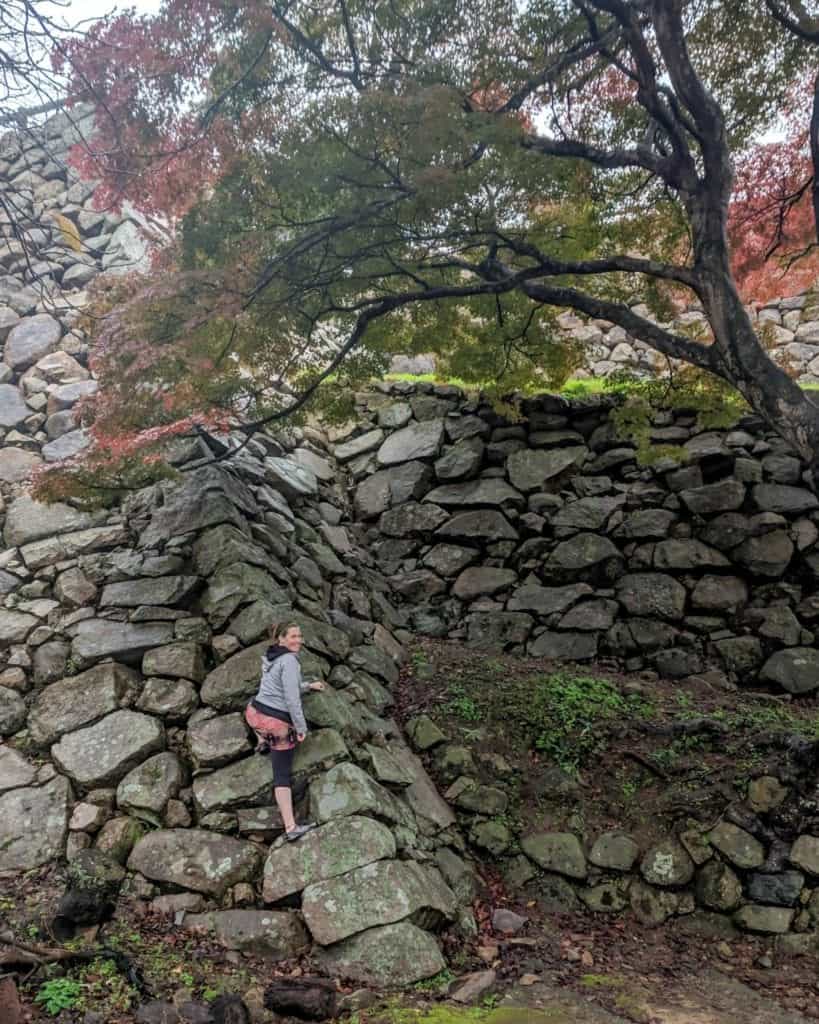
Tottori is famous in Japan for a 200-day siege that starved out the defenders in 1581. That’s what happens when you take full advantage of the landscape. The actual castle keep stood at the summit of the mountain, a few hundred meters above sea level. With massive walls of lower defenses and a river moat.
If you like to hike, you can still make it up some trails to the top. Or there is plenty of walking and climbing you can do on the lower levels of what remains.
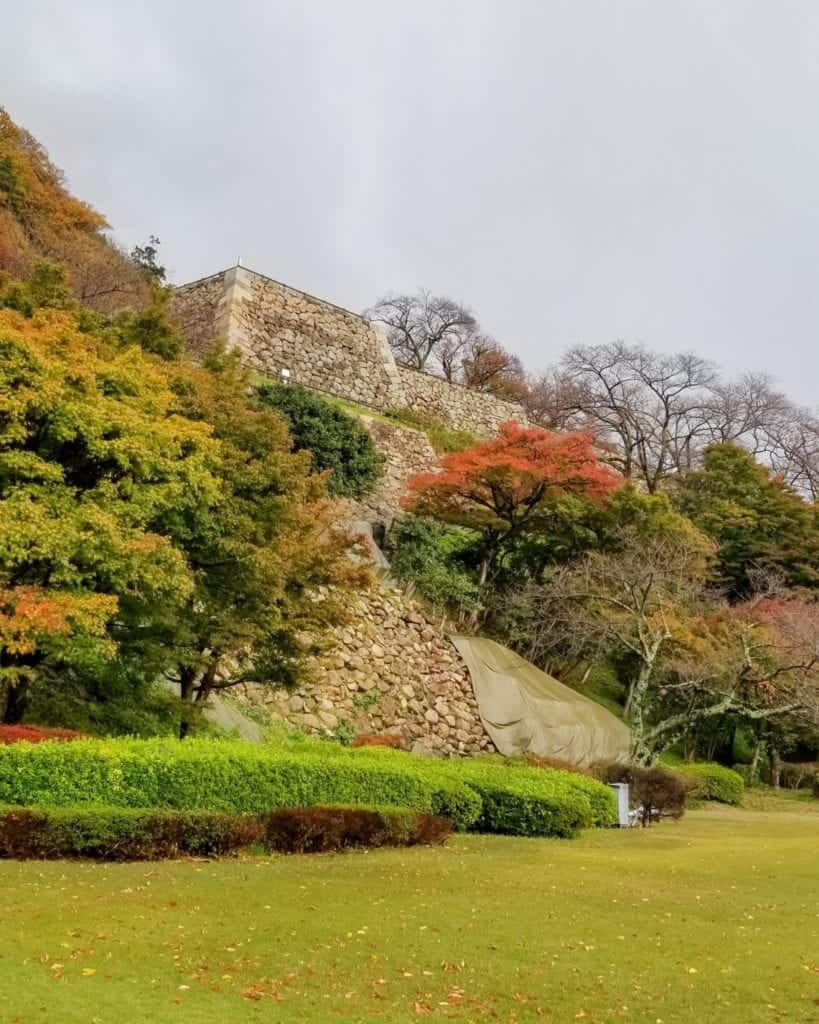
4. Colonial House, Jinpukaku, 仁風閣
When Tottori Castle still remained on the site, the Ohgi Goten, Fan Palace, stood in this location on the lower bailey. It held the name fan due to Tottori being laid out in a fan shape. Hence, the Jinpukaku is often time referred to as the same.
It was constructed in 1906 for the same reason as Kouunkaku in Matsue. To be used by the crown prince on his visit to the city. Rather an extravagant welcoming if you ask me. The house was the first in the PREFECTURE to have electric lights.
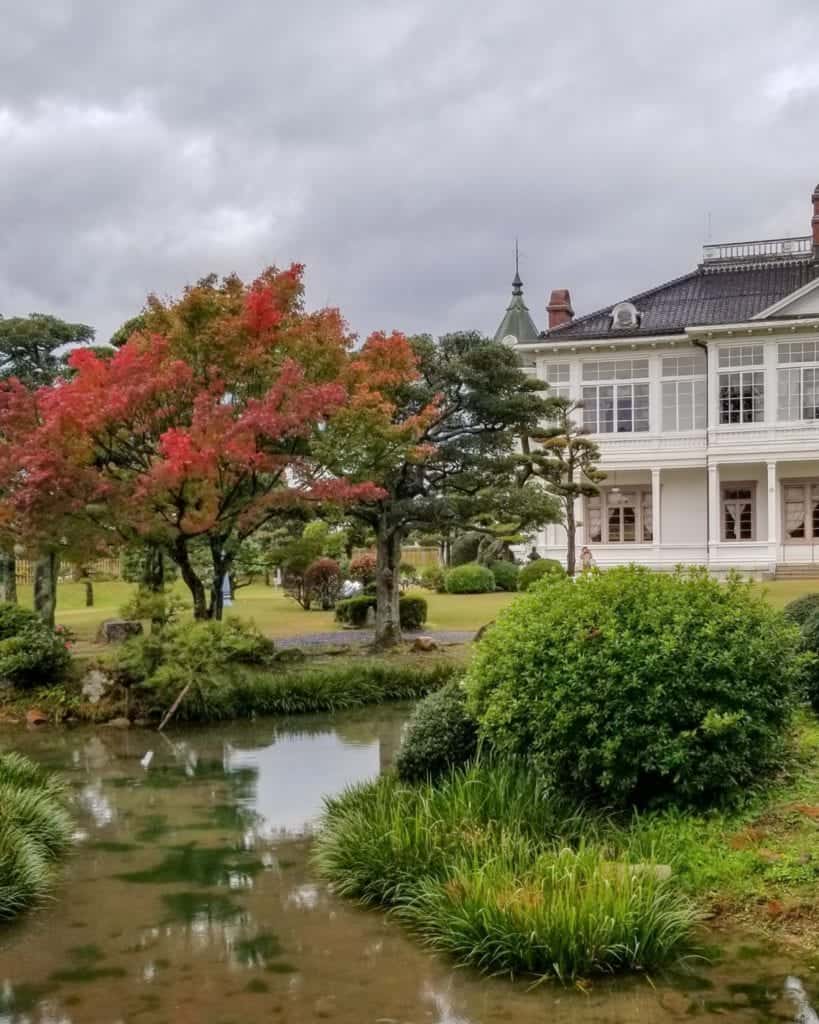
It’s been used for many things over the years but now remains an exhibit and a National Important Cultural Property.
The house has beautiful gardens in the back with a backdrop of the castle wall ruins. Horyuin Garden is its name. It was consolation for the widow of one of the Lords and the paint has seen better days. It was a part of a movie at one point, and it looks like they did a speedy job of it, and since the Japanese humidity has gotten the best of it.
One note, if you are accomplishing the stamp rally for the 100 finest Japanese castles, you need to make a trip to this house to get your stamp for Tottori Castle ruins. Mystery solved for where the stamps are for the ruins!
5. Karoichi Fish Market
Karoichi Fish Market is just minutes from the port. If you’ve been to Tsukiji, it will be slightly underwhelming. However, Tottori is known for its 松葉かに (matsuba crab), enough so that they are nicknamed ”蟹取県” or “kani tori ken”. Kani = crab; tori for the last half of Tottori; Ken =prefecture” or plainly, “crab prefecture”.
What will you see a lot of in this little market? Crab. But also fish of all types, vegetables at the peripheral market, Tottori wagyu and rice.
What is Matsuba Crab?
Matsuba Crab is a funny name as the kanji literally is “pine needle” but it comes from the fact that the legs are thin like pine needles. Ultimately, they are the same as snow crabs but Matsuba crabs are specifically from the San’in region of Japan.
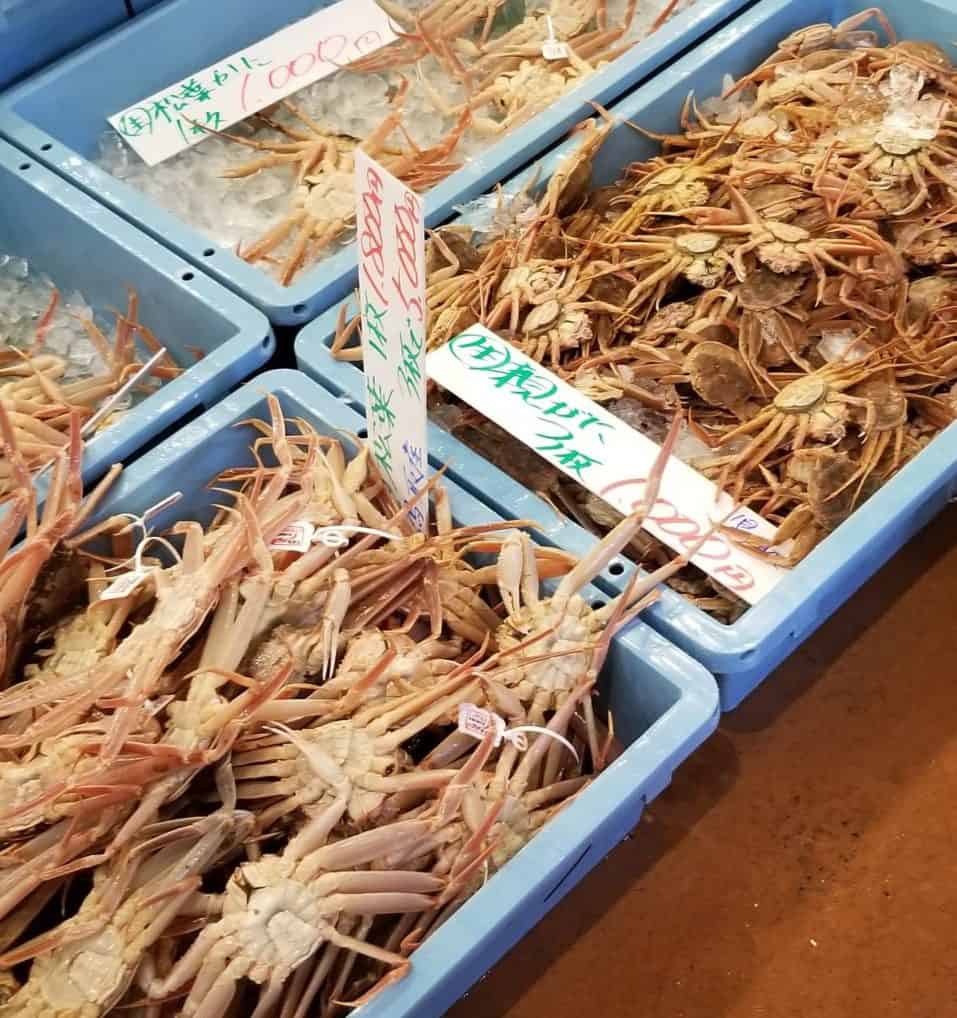
6. 鳥取賀露かにっこ館 (Tottori Karo Kanikkokan, Tottori Karo Crab Aquarium
If you didn’t see enough crabs at the market, you can head next door to the 鳥取賀露かにっこ館 (Tottori Karo Kanikkokan, Tottori Karo Crab Aquarium) and see exhibits of all the different various types of crab of the region.
While it is small and more geared at young children, admission is free! If you are next door at the Karoichi Fish Market, it’s worth a stop in.
7. Have some of the 地元の味 (jigenoaji, local taste)
Statistics say that the crab consumption per household is five times the national average in Tottori City! So why not try some of the “地元の味” (jigenoaji, local taste)?
There are several crab restaurants located close to the market (along with some sushi restaurants). Highly recommend trying one of them out. Prices get steep fast but it will be some of the best crab you’ve ever tried. Look for a 定食, teishoku, or set meal.
Across the street from the Karoichi Market is a restaurant/izakaya and store specializing in matsuba crab called かに大陸 (kanitairiku) which translates into “Crab Continent”. They’re set meal has the option to include 飲み放題 (nomihoudai or all-you-can-drink) and will run you about $100 USD.

This will come with rice, a bunch of side dishes, miso (most likely with crab!), and your main course of crab. You can choose which style you want (boiled, grilled, baked), or you can try all of them usually. The price goes up the more options you add.
If you want to go even more high class on the crab options, Michelin made it to Tottori for the first time in 2019 and awarded two stars to Kani-Yoshi in town. The set courses start at 25,000 yen and go way up from there (pushing $800 USD).
Both restaurants buy freshly caught crab that morning from the port to serve the same day.
Other Tottori Regional Specialties
Not looking to spend a small fortune? Tottori is known for a lot of other dishes like:
- Horu soba (yakisoba with horumon as the meat)
- Gyuukotsu Ramen (Ramen made with cow bones as the broth base, which is less common than you would think)
- Tottori Wagyu (okay, that will run you a pretty penny but famous for it’s fat content)
8. Getting around town: Kirin Jishi Loop Bus
The loop bus is probably the most convenient way to get around. However, unless you are there in August, it only runs on weekends and holidays. You also have the option to take the city buses. If you need help, see our guide for riding buses.
For the loop pass, you can buy your 600 yen pass at the train station at the information booth (and they can provide an English version of the timetable) or onboard.

Don’t forget to grab your “stamp rally” stamp at the front of the train which gives you discounts and special treats such as a nice postcard at the Tottori Sand Museum. You’ll first need to get the stamp rally at the information booth, a reason to get your timetable at the information booth! Plus there is much to be said for tourism information booths in Japan!
The bus itself is a nice way to see the highlights of the town and why I’ve included it in the list of things to do (it will also get you everywhere that I’ve listed above!). If you don’t want the pass, it is 300 yen a trip so it’s worth it for an out and back even to get the pass, plus it makes a cute souvenir.
Disclosure: Kristenabroad.com is a participant in the Amazon Services LLC Associates Program and other affiliate programs. For some links to products or services in this article, I may earn a small commission by you using my link. The price for you is not affected.
How to Get to Tottori By Train
Ah, the train, one of the best things about Japan. You can use your Japan Rail Pass to easily get to Tottori, though depending on where you are coming from it can be a bit of a hike!
From Okayama to Tottori
If you are trying to see western Japan and even Shikoku (for instance if you are attempting to see as many of the original 12 castles of Japan as possible), I highly suggest using Okayama as your jumping ground as it is an excellent hub to just about anywhere. It’s much easier to leave your bag in one location, even if you have to take a little longer on train travel.
From Okayama, hop on the JR Super Inaba line directly to Tottori. The trip is completely covered by the JR Rail Pass and takes about 1.75 hours.
From Kyoto to Tottori
You’ll want to get the Limited Express Hamakaze from Kyoto to Tottori which is also covered by the rail pass. Note that it leaves only during “commuting” hours but if you are using Kyoto as your hub and just want to do a day trip, those are the best options anyway!
You can also take the Super Hakuto Limited Express (also your option from Osaka) which is faster but it isn’t fully covered by the rail pass as it runs on non-JR tracks. The fee as of writing this is less than $20 USD but that is still fairly substantial so I’d go with the Hamakaze! For those of you that live in Japan, pick whichever works for you!
How to get to Tottori from Tokyo by Plane
Let’s face it, the shinkansen from Tokyo is a bit long at 6 hours. There are flights from Haneda to Tottori that take 75 minutes and if you can find a discounted ticket (or probably even full fair), will probably end up less expensive that the train if you live local and therefore can’t get the rail pass.
JAL and ANA Air Passes
People on visitor visas – it is still something to note, did you know that you can get air passes? It’s the same thing as the rail pass but for planes! Both JAL and ANA offer passes and it is a great option if you want to jump Japan’s four main islands, or even down to Okinawa as part of your trip to Japan!
Like this post? Pin it for later!
Have a question? Leave it for me in the comments.
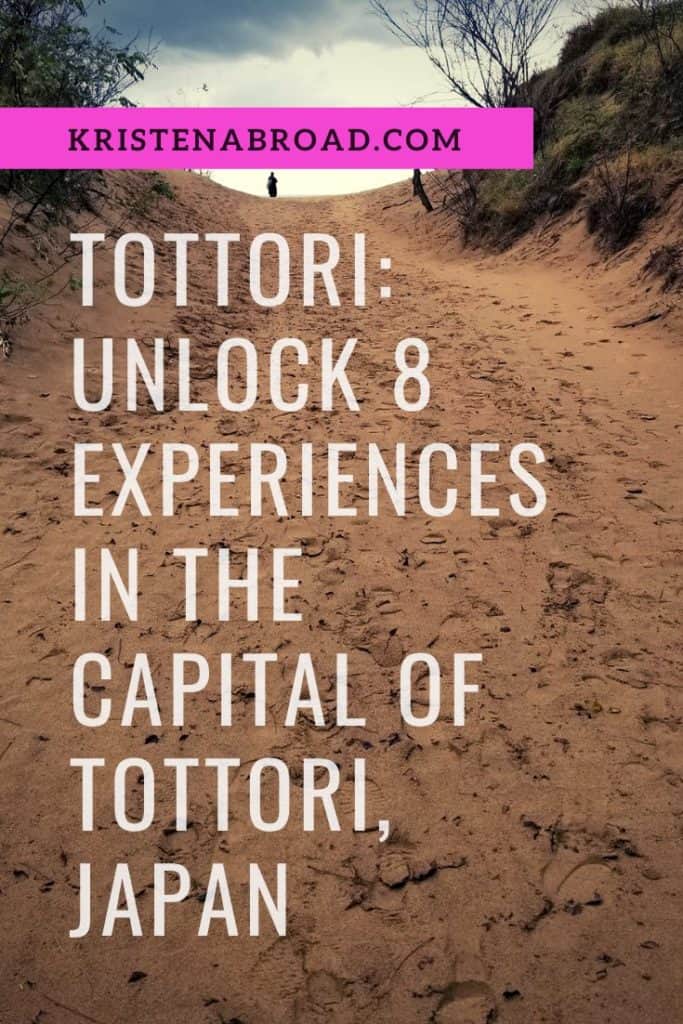

Omg I LOVE THAT SAND MUSEUM! My dream is to do japan one day! Thank you for your guide I’ll have to use it when Igo xo-LaTianna
I’m so glad you enjoyed it LaTianna :). I’ll keep the guides coming! There are so many places to see in Japan. Let me know when you make it this way. I love helping out people on their visits 🙂
Just pinned this for when I visit Japan! Hopefully in the near future ☺️ This was super helpful!
Xx
http://Www.Chelsya.Com
I’m so glad you enjoyed it! Will keep more coming and definitely let me know when you are coming to Japan!